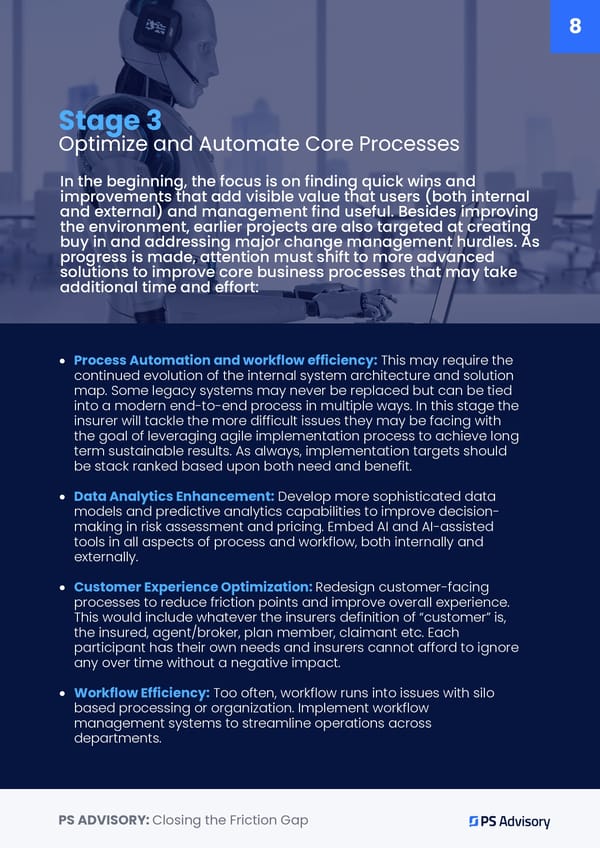Process Automation and workflow efficiency: This may require the continued evolution of the internal system architecture and solution map. Some legacy systems may never be replaced but can be tied into a modern end-to-end process in multiple ways. In this stage the insurer will tackle the more difficult issues they may be facing with the goal of leveraging agile implementation process to achieve long term sustainable results. As always, implementation targets should be stack ranked based upon both need and benefit. Data Analytics Enhancement: Develop more sophisticated data models and predictive analytics capabilities to improve decision- making in risk assessment and pricing. Embed AI and AI-assisted tools in all aspects of process and workflow, both internally and externally. Customer Experience Optimization: Redesign customer-facing processes to reduce friction points and improve overall experience. This would include whatever the insurers definition of “customer” is, the insured, agent/broker, plan member, claimant etc. Each participant has their own needs and insurers cannot afford to ignore any over time without a negative impact. Workflow Efficiency: Too often, workflow runs into issues with silo based processing or organization. Implement workflow management systems to streamline operations across departments. Stage 3 Optimize and Automate Core Processes PS ADVISORY: Closing the Friction Gap In the beginning, the focus is on finding quick wins and improvements that add visible value that users (both internal and external) and management find useful. Besides improving the environment, earlier projects are also targeted at creating buy in and addressing major change management hurdles. As progress is made, attention must shift to more advanced solutions to improve core business processes that may take additional time and effort: 8
 Closing the Friction Gap: A Continuous Improvement Roadmap for Insurers Page 9 Page 11
Closing the Friction Gap: A Continuous Improvement Roadmap for Insurers Page 9 Page 11